“Trump is witnessing an unfolding Iranian revolution — time to act”
By Ivan Sascha Sheehan and Raymond Tanter
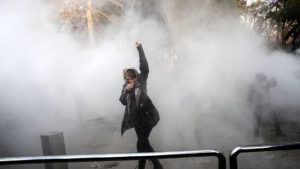
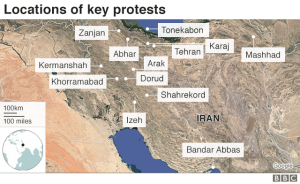
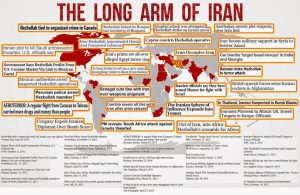
As 2018 begins, several large metropolitan centers in Iran are ablaze with major anti-government demonstrations roaring in the streets.
Protestors are chanting slogans indicative of a revolution: “Death to the dictator,” “Death to (Hassan) Rouhani,” “Don’t be afraid, we are all together,” “Forget about Syria, think about us,” “Not Gaza, nor Lebanon, my life for Iran.”
After multiple days of demonstrations spread to Tehran, President Rouhani said Iranians are “free to protest but must not jeopardize security.”
Around the world many are asking whether the Arab uprisings have given way to a Persian Revolution, while analysts in Washington are wondering whether 2018 will bring regime change to Tehran.
Significance
The National Council of Resistance of Iran (NCRI) and its leading constituent group, the People’s Mojahedin Organization of Iran (PMOI/MEK), have played a key role in organizing the major protests in Iran for decades. Their intricate network inside Iran has been critical to informing the world of Tehran’s malign behavior from nuclear pursuits to terrorism and human rights abuses to proxy violence.
Scholars understand regime change by the people of Iran is within reach but is best achieved by those in the resistance with the organizing capacity, determination, and political wherewithal to achieve it. The White House has all the necessary elements to assist the Iranian people in bringing about the democratic change they seek: capability, credibility, and an organized opposition to facilitate regime change from within.
Neither President Bush nor President Obama backed the Iranian people when they rose up to change the government in Tehran following protests during their respective tenures. President Trump, therefore, has an opportunity to make history.
Trump can and should take decisive action in 2018 to support the ouster of the virulently anti-American theocracy that has ruled Iran with an iron fist and threatened its neighbors for the past four decades.
On Dec. 31, 2017, Sen. Lindsey Graham appeared on CBS “Face the Nation,” Graham said, “President Trump should embrace the anti-regime protests currently engulfing Iran…”
When asked by host Major Garrett if he had shared these views with the president personally, Graham responded, “I just did.”
The president should follow Graham’s lead and throw American support behind the brave anti-government protesters who have taken to the streets in mass demonstrations across the Islamic Republic since last week. The U.S. State Department announced December 29 that we:
“Strongly condemn the arrest of peaceful protesters. We urge all nations to publicly support the Iranian people and their demands for basic rights and an end to corruption.”
Trump suggests a credible threat to support the Iranian people and their organized resistance is at hand. In his recent tweet on the issue, Trump said Iranians were, “finally getting wise as to how their money and wealth (are) being stolen and squandered on terrorism,” and “the USA is watching very closely for human rights violations!”
The Way Forward
Our scholarship indicates that, as a political gesture, Trump’s formal recognition of the Iranian people’s right to regime change and the legitimacy of the organized resistance could help to further tip the balance in favor of those seeking democratic change in Iran.
Our research also suggests contrary to the rhetoric of Iran’s rulers, the Iranian public is predisposed to democracy, seeks civil and political freedoms, and wants positive relations with Western powers. The Iranian people, therefore, represent an important potential ally for the United States in efforts to improve the stability of the Middle East.
Trump can cite the ongoing demonstrations as evidence that Iranian lives have not improved since the 2015 nuclear agreement that lifted worldwide economic sanctions against Iran in return for actions designed to halt the nation’s development of nuclear weapons. Only Iranian companies linked to the government and the Revolutionary Guard have reaped the rewards of reopened international trade, while the Iranian people face increasingly dire economic circumstances.
Regimes in Egypt, Tunisia, Yemen and Syria learned the hard way that mass demonstrations in the context of discontent are infectious. The demonstrations facing the Iranian regime — already fearful of protest — are an opportunity to use the people’s resentment as leverage to achieve significant political change. As Trump noted in his remarks to the United Nations, the Iranian people are the biggest threat to the regime.
Finally, the expansion of protests constitute a crisis for the regime and an opportunity to use the people’s resentment as leverage against it. The Obama administration squandered valuable opportunities in the past — most notably during the 2009 antigovernment protests in Iran, which were backed up by the NCRI, when Western powers turned a blind eye to the regime’s brutal crackdown.
It is time for this situation to change. If not now, when? The accelerating crisis is an opportunity to change the regime from within. The Iranian people are in the streets to make a revolution happen.
Prof. Ivan Sascha Sheehan is director of the graduate programs in Global Affairs and Human Security and Negotiations and Conflict Management in the School of Public and International Affairs at the University of Baltimore. Follow him on Twitter @ProfSheehan.
Prof. Raymond Tanter served as a senior member on the Middle East Desk of the National Security Council staff in the Reagan-Bush administration, personal representative of the secretary of Defense to international security and arms control talks in Europe, and is now professor emeritus at the University of Michigan. Follow him on Twitter @AmericanCHR.
“Iran Protests Should Prompt Update of Trump Policy, Nuclear Deal”
By Raymond Tanter and Ivan Sascha Sheehan
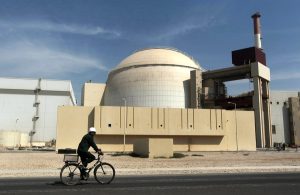
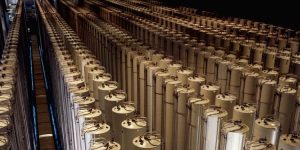
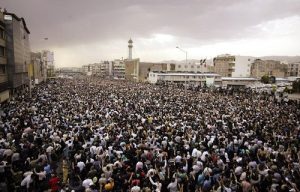

“This time, we will not be silent on Iran”
— Vice President Mike Pence
Vice President Mike Pence’s unwillingness to be silent on the persecution of the Iranian people by Iran’s repressive security forces distinguishes Team Trump from Team Obama and signals a willingness to stand with their freedom-seeking friends in Iran during an hour of perilous danger.
The expansion of protests in Iran constitutes a crisis for the Iranian regime and an opportunity to use the people’s resentment as leverage against it. The Obama administration squandered valuable opportunities in the past — most notably during the 2009 anti-government protests in Iran, which were backed up by the National Council of Resistance of Iran (NCRI), when Western powers turned a blind eye to the regime’s brutal crackdowns. Now is time for the Trump administration to break with the past and move in new direction. The accelerating crisis in Iran marks an opportunity to change the Iranian regime from within. The Iranian people are in the streets to make their revolution happen and they need the moral support of the West.
Among the factors distinguishing today’s protests from 2009 is the increasing use of smartphones in Iran. Scholars understand that the devices can be dangerous instruments for revolutionary change, per BBC, which contrasts the 2009 protests with those in 2017-2018.
“In 2009 — when an estimated 2 million to 3 million Iranians protested silently in Tehran — fewer than 1 million Iranians owned such a device, and few outside Tehran. Today, an astonishing 48 million Iranians are thought to have smartphones, all of them equipped with social media and communication apps,” per Karim Sadjadpour of the Carnegie Endowment on Dec. 31.
BBC cites in 2009, when millions of people took to the streets, “there were some 55m mobile subscriptions in Iran.” “Today, there are more than 80m mobile subscriptions and 41 percent of households are estimated to have access to at least one smartphone.”
By expressing strong support for the protestors, President Trump and others in his administration have seized on anti-government protests raging in the streets as vindication of his critique of the Obama administration’s approach to Iran’s Ayatollahs.
Trump sees the Iran protests as an occasion for both a win on the world stage and an opportunity to lay a glove on one of President Barack Obama’s greatest mistakes — the failure to support the demonstrators in 2009, when millions of Iranians flooded the streets to protest the dubious reelection of Mahmoud Ahmadinejad. “Unlike during the previous administration, this President is not afraid to call out a brutal regime undermining basic human rights,” said a White House spokesman, Raj Shah. “The Trump administration is contemplating further action to support the Iranian people.”
The protests, security crackdowns, and potential for regime change from within, present an occasion for a new Iran Policy Review (IPT), a reassessment of the National Security Strategy (NSS), and a discussion of whether the president should recertify or withdraw from the Iran Nuclear Deal. We view the IPT, NSS, and the Nuclear Deal as out-of-date and believe that they should modified in light of ongoing protests. The potential for revolution in Iran means all bets are off for the IPT, NSS, and the U.S. must now closely scrutinize the Joint Comprehensive Plan of Action (JCPOA) with Iran.
Iran Policy Review
The January decision on what to do about Iran arrives as the Trump administration reviews its overall strategy in the region. National Security Adviser H.R. McMaster plans to rollout results of a Syria Policy Review this month. There also needs to be a new Iran Policy Review. In contrast to our finding, a colleague, Mark Dubowitz, CEO of the Foundation for Defense of Democracies, commented on Dec. 28, in an article on the Iran nuclear deal without discussing protests in Iran. In his defense, Dubowitz may have made his remarks prior to news of the protests, which began the same day.
National Security Strategy
On Oct. 13, 2017, President Trump announced his Iran National Security Strategy (NSS). Key elements included a focus on the Iranian people: it stated that Iran is under the control of a fanatical regime that seized power in 1979 and forced a proud people to submit to extremist rule.
Furthermore, the U.S. is far from the only target of the Iranian dictatorship’s long campaign of bloodshed. The regime violently suppresses its own citizens; it after all shot unarmed student protestors in the street during 2009 protests resulting from the “reelection” of Ahmadinejad.
Finally, the execution of our strategy begins with the long-overdue step of imposing tough sanctions on Iran’s Islamic Revolutionary Guard Corps. The Revolutionary Guard is the Iranian Supreme Leader’s corrupt personal terror force and militia. It has hijacked large portions of Iran’s economy and seized massive religious endowments to fund war and terror abroad, which brings us to the nuclear deal.
Nuclear Deal with Iran
On Jan. 15, President Trump must decide what he wants to do with the Iran nuclear accord. In October, Trump gave Congress and our European partners three months to strengthen provisions in the JCPOA, before deciding whether he would sign a waiver that would continue the freeze on U.S. sanctions.
Dubowitz said on Dec. 28, that the president would keep the nuclear deal separate from his views about the protests. “It’s entirely possible that Trump tells Congress and the Europeans, ‘I gave you 90 days to get your act together and you didn’t — and I’m done.’”
On the other hand, we find that demonstrations are a signal that the tide is turning against the Iranian regime. Likewise, on Jan. 3, Omri Ceren of The Israel Project reports a bipartisan array of U.S. lawmakers is throwing its support behind Iranian protesters marching against the regime, in the most turbulent unrests in the Islamic Republic since 2009.
The president seems inclined to this view when he tweeted, “The people of Iran are finally acting against the brutal and corrupt Iranian regime,” and “the people have little food, big inflation and no human rights. The U.S. is watching!”
The Way Forward
First, our analysis suggests that organizations and states helping Tehran’s repressive apparatus — including those providing censorship technology — should face censure from Washington. Michael Singh, a senior fellow at the Washington Institute for Near East Policy, who studies Iran, told The National that protests underscore President Trump’s critique of the Iranian regime, which on Jan. 2, he described as “brutal and corrupt.” Vice President Mike Pence echoed the president’s sentiment in a tweet: “The bold and growing resistance of the Iranian people today gives hope and faith to all who struggle for freedom and against tyranny. We must not, and we will not let them down.”
Second, we find Washington should at least provide moral support to assist peaceful protests, especially ways to help Iranians communicate with one another as the regime restricts the Internet. On Oct. 11, prior to the Oct. 28 beginning of the demonstrations, Rep. Ed Royce, (R-Calif.), said, “As flawed as the deal is, I believe we must now enforce the hell out of it,” Royce said at a committee hearing on Iran, per The Hill.
Our research finds the views of Chairman Royce have been reinforced by the demonstrations, expanding from the rural area into the urban cities, and finally to Tehran. It would be like starting in a “Reddish” U.S. territory that supported Trump, such as its capital, Frankfort, Kentucky, and moving to Louisville, e.g., the Tehran of Iran.
Third, the Iran Policy Review, National Security Strategy, and the Nuclear Deal are out-of-date. They must be reassessed and changed in consideration of the demonstrations, and subsequent violence by security forces against protestors.
Our research finds the potential for revolution in Iran means the regime is on its knees. This is not the time to compromise with Tehran. This is the time to press ahead for regime change from within. Iranian Americans are holding a “Rally to Support the #IranProtests” in front of the White House on Dec. 6 from 12:30 pm to 2:00 pm, and our research suggests American supporters should join in support of the Iranian people and their efforts to topple the regime in Tehran.
Prof. Raymond Tanter (@AmericanCHR) served as a senior member on the Middle East Desk of the National Security Council staff in the Reagan-Bush administration, Personal Representative of the Secretary of Defense to international security and arms control talks in Europe, and is now Professor Emeritus at the University of Michigan. Tanter is on the comprehensive list of conservative writers and columnists who appear in The Wall Street Journal, Townhall.com, National Review, The Weekly Standard, Human Events, The American Spectator, and now in Newsmax. To read more of his reports — Click Here Now.
Prof. Ivan Sascha Sheehan is director of the graduate programs in Global Affairs and Human Security and Negotiations and Conflict Management in the School of Public and International Affairs at the University of Baltimore. Follow him on Twitter @ProfSheehan.


